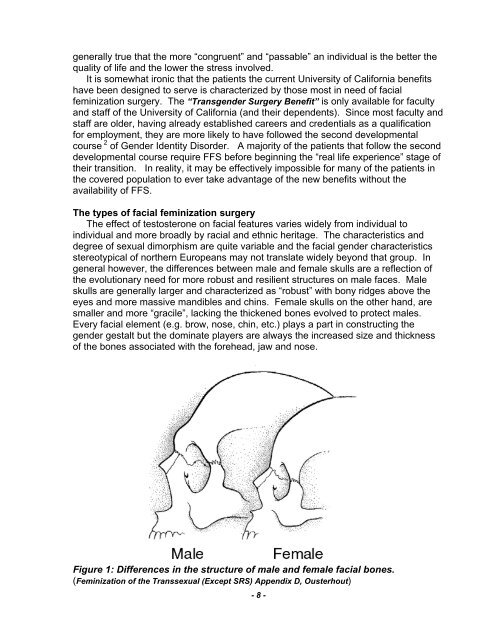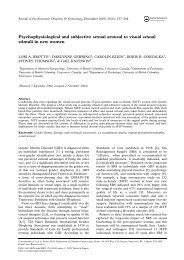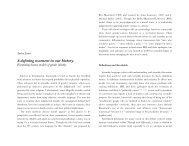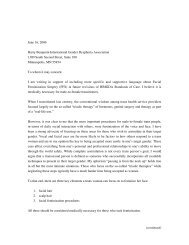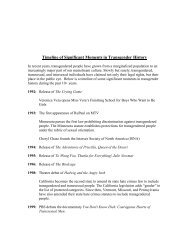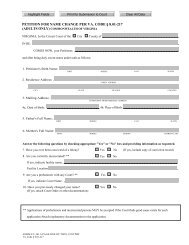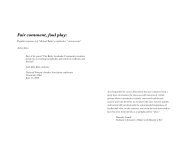Facial Feminization Surgery and The Standards of Care
Facial Feminization Surgery and The Standards of Care
Facial Feminization Surgery and The Standards of Care
- No tags were found...
You also want an ePaper? Increase the reach of your titles
YUMPU automatically turns print PDFs into web optimized ePapers that Google loves.
generally true that the more “congruent” <strong>and</strong> “passable” an individual is the better thequality <strong>of</strong> life <strong>and</strong> the lower the stress involved.It is somewhat ironic that the patients the current University <strong>of</strong> California benefitshave been designed to serve is characterized by those most in need <strong>of</strong> facialfeminization surgery. <strong>The</strong> “Transgender <strong>Surgery</strong> Benefit” is only available for faculty<strong>and</strong> staff <strong>of</strong> the University <strong>of</strong> California (<strong>and</strong> their dependents). Since most faculty <strong>and</strong>staff are older, having already established careers <strong>and</strong> credentials as a qualificationfor employment, they are more likely to have followed the second developmentalcourse 2 <strong>of</strong> Gender Identity Disorder. A majority <strong>of</strong> the patients that follow the seconddevelopmental course require FFS before beginning the “real life experience” stage <strong>of</strong>their transition. In reality, it may be effectively impossible for many <strong>of</strong> the patients inthe covered population to ever take advantage <strong>of</strong> the new benefits without theavailability <strong>of</strong> FFS.<strong>The</strong> types <strong>of</strong> facial feminization surgery<strong>The</strong> effect <strong>of</strong> testosterone on facial features varies widely from individual toindividual <strong>and</strong> more broadly by racial <strong>and</strong> ethnic heritage. <strong>The</strong> characteristics <strong>and</strong>degree <strong>of</strong> sexual dimorphism are quite variable <strong>and</strong> the facial gender characteristicsstereotypical <strong>of</strong> northern Europeans may not translate widely beyond that group. Ingeneral however, the differences between male <strong>and</strong> female skulls are a reflection <strong>of</strong>the evolutionary need for more robust <strong>and</strong> resilient structures on male faces. Maleskulls are generally larger <strong>and</strong> characterized as “robust” with bony ridges above theeyes <strong>and</strong> more massive m<strong>and</strong>ibles <strong>and</strong> chins. Female skulls on the other h<strong>and</strong>, aresmaller <strong>and</strong> more “gracile”, lacking the thickened bones evolved to protect males.Every facial element (e.g. brow, nose, chin, etc.) plays a part in constructing thegender gestalt but the dominate players are always the increased size <strong>and</strong> thickness<strong>of</strong> the bones associated with the forehead, jaw <strong>and</strong> nose.Figure 1: Differences in the structure <strong>of</strong> male <strong>and</strong> female facial bones.(<strong>Feminization</strong> <strong>of</strong> the Transsexual (Except SRS) Appendix D, Ousterhout)- 8 -


